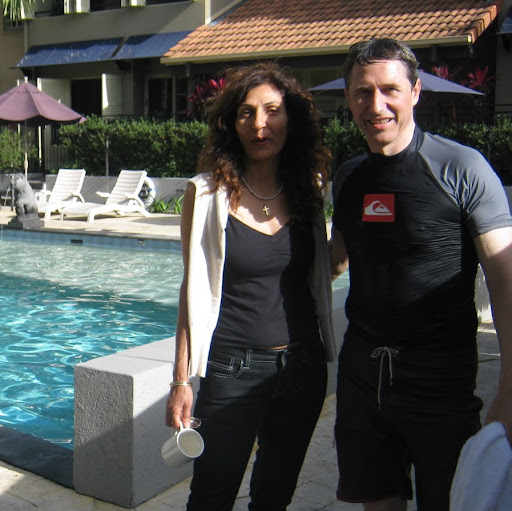Karl E Edwards
age ~62
from Murrieta, CA
Karl Edwards Phones & Addresses
- 37873 Spur Dr, Murrieta, CA 92563
- San Diego, CA
- 5018 Indian Hills Dr, Garland, TX 75040
- 5818 Indian Hills Dr, Garland, TX 75044
- 2939 Helmsley Dr, San Jose, CA 95132
- Richardson, TX
- Mountain View, CA
- Santa Clara, CA
Name / Title
Company / Classification
Phones & Addresses
Incorporator
HAPPY ACRES CONVALESCENT HOME, INC
Resumes

Karl Edwards
view source
Supervisor
view sourceWork:
Supervisor

Karl Edwards
view sourceLocation:
United States

Karl Edwards
view sourceLocation:
United States
Us Patents
-
Cancellation Of Slope Compensation Effect On Current Limit
view source -
US Patent:6498466, Dec 24, 2002
-
Filed:May 23, 2000
-
Appl. No.:09/576517
-
Inventors:Karl Edwards - San Jose CA
-
Assignee:Linear Technology Corp. - Milpitas CA
-
International Classification:G05F 140
-
US Classification:323282, 363 2117
-
Abstract:A current-mode switching regulator that maintains a substantially constant maximum current limit over a virtually full range of duty cycles is provided. The regulator has a control circuit that includes a buffer circuit, an adjustable voltage clamp circuit, and a slope compensation circuit. The buffer circuit isolates a control signal from capacitive loading associated with control circuit. The threshold level of the adjustable voltage clamp circuit varies with respect to the amount of slope compensation provided to the voltage regulator. This allows a control voltage to increase as slope compensation increases so that a substantially constant maximum current limit is maintained.
-
Load-Generated Drive, Substantially No Quiescent Current, Techniques And Circuits For High Speed Switching Of Transistors
view source -
US Patent:6531909, Mar 11, 2003
-
Filed:Sep 15, 1999
-
Appl. No.:09/397629
-
Inventors:Karl Edwards - San Jose CA
-
Assignee:Linear Technology Corporation - Milpitas CA
-
International Classification:H03K 1704
-
US Classification:327374, 327376, 327377
-
Abstract:Techniques and circuits for high speed switching of transistors are provided. These techniques and circuits switch an output device while varying the drive current to the output device in proportion to the output current through the output device. In addition, these techniques and circuits provide a switching circuit with substantially no quiescent currents. This is accomplished by sampling the output current conducted by the output device and using the sample as a signal to drive either the output device fully ON or to switch the output device fully OFF.
-
High-Speed, Current-Driven Latch
view source -
US Patent:6535042, Mar 18, 2003
-
Filed:Feb 22, 2000
-
Appl. No.:09/510181
-
Inventors:Karl Edwards - San Jose CA
-
Assignee:Linear Technology Corporation - Milpitas CA
-
International Classification:H03K 3286
-
US Classification:327217, 327219, 327222
-
Abstract:A high-speed, current-driven latch is provided. The latch conducts a current and includes an output, a SET circuit and a RESET circuit. The output is variable between a first state and a second state. The SET circuit conducts the current present in the latch at the first state such that the SET circuit is maintained close to a level required to change the output of the transistor from the first to the second level, and the RESET circuit conducts the current at the second level such that the RESET circuit is close to a level required to change the output of the transistor from the second level to the first level.
-
Cancellation Of Slope Compensation Effect On Current Limit
view source -
US Patent:6611131, Aug 26, 2003
-
Filed:Sep 30, 2002
-
Appl. No.:10/261916
-
Inventors:Karl Edwards - San Jose CA
-
Assignee:Linear Technology Corp. - Milpitas CA
-
International Classification:G05F 140
-
US Classification:323282, 363 2117
-
Abstract:A current-mode switching regulator that maintains a substantially constant maximum current limit over a virtually full range of duty cycles is provided. The regulator has a control circuit that includes a buffer circuit, an adjustable voltage clamp circuit, and a slope compensation circuit. The buffer circuit isolates a control signal from capacitive loading associated with control circuit. The threshold level of the adjustable voltage clamp circuit varies with respect to the amount of slope compensation provided to the voltage regulator. This allows a control voltage to increase as slope compensation increases so that a substantially constant maximum current limit is maintained.
-
High-Speed, Current Driven Latch
view source -
US Patent:6750690, Jun 15, 2004
-
Filed:Jan 22, 2003
-
Appl. No.:10/350927
-
Inventors:Karl Edwards - San Jose CA
-
Assignee:Linear Technology Corporation - Milpitas CA
-
International Classification:H03K 312
-
US Classification:327217, 327199, 327200
-
Abstract:A high-speed, current-driven latch is provided. The latch conducts a current and includes an output, a SET circuit and a RESET circuit. The output is variable between a first state and a second state. The SET circuit conducts the current present in the latch at the first state such that the SET circuit is maintained close to a level required to change the output of the transistor from the first to the second level, and the RESET circuit conducts the current at the second level such that the RESET circuit is close to a level required to change the output of the transistor from the second level to the first level.
-
High-Speed, Current Driven Latch
view source -
US Patent:6847245, Jan 25, 2005
-
Filed:Jan 22, 2003
-
Appl. No.:10/350670
-
Inventors:Karl Edwards - San Jose CA, US
-
Assignee:Linear Technology Corp. - Milpitas CA
-
International Classification:H03K 312
-
US Classification:327217, 327215, 327219
-
Abstract:A high-speed, current-driven latch is provided. The latch conducts a current and includes an output, a SET circuit and a RESET circuit. The output is variable between a first state and a second state. The SET circuit conducts the current present in the latch at the first state such that the SET circuit is maintained close to a level required to change the output of the transistor from the first to the second level, and the RESET circuit conducts the current at the second level such that the RESET circuit is close to a level required to change the output of the transistor from the second level to the first level.
-
Load-Generated Drive, Substantially No Quiescent Current, Techniques And Circuits For High Speed Switching Of Transistors
view source -
US Patent:6861892, Mar 1, 2005
-
Filed:Jan 22, 2003
-
Appl. No.:10/350552
-
Inventors:Karl Edwards - San Jose CA, US
-
Assignee:Linear Technology Corporation - Milpitas CA
-
International Classification:H03K017/04
-
US Classification:327374, 327376, 327377
-
Abstract:Techniques and circuits for high speed switching of transistors are provided. These techniques and circuits switch an output device while varying the drive current to the output device in proportion to the output current through the output device. In addition, these techniques and circuits provide a switching circuit with substantially no quiescent currents. This is accomplished by sampling the output current conducted by the output device and using the sample as a signal to drive either the output device fully ON or to switch the output device fully OFF.
-
High-Speed, Current-Driven Latch
view source -
US Patent:7173465, Feb 6, 2007
-
Filed:Mar 10, 2005
-
Appl. No.:11/077297
-
Inventors:Karl Edwards - San Jose CA, US
-
Assignee:Linear Technology Corporation - Milpitas CA
-
International Classification:H03K 3/037
-
US Classification:327217, 327199, 327200, 327201, 327204, 327207
-
Abstract:A high-speed, current-driven latch is provided. The latch conducts a current and includes an output, a SET circuit and a RESET circuit. The output is variable between a first state and a second state. The SET circuit conducts the current present in the latch at the first state such that the SET circuit is maintained close to a level required to change the output of the transistor from the first to the second level, and the RESET circuit conducts the current at the second level such that the RESET circuit is close to a level required to change the output of the transistor from the second level to the first level.
Classmates

Karl Edwards
view sourceSchools:
White Pass High School Randle WA 1989-1993
Community:
Geri Kelly, Sharon Perkins, Sandie Post

Karl Edwards
view sourceSchools:
Pleasant Hill Unit 3 High School Pleasant Hill IL 1996-2000
Community:
Sara Mcintire, Kayla Starman, Dustin Fraley, David Miller, Rusty Harrison, Holly Morrison, Ann Skirvin, Amy Barnes, Jennifer Watts, Terry Clendenny, Eica Coy

Karl Edwards | Memphis Te...
view source
Karl Edwards | Middle Co...
view source
Stephen Karl Edwards | Gl...
view source
Lake Consolidated High Sc...
view sourceGraduates:
Carl Edwards (1959-1963),
Chris Boam (1965-1969),
Pete Schmeltzer (1971-1975),
Doris Frisbie (1947-1951),
Don Laskowski (1967-1971)
Chris Boam (1965-1969),
Pete Schmeltzer (1971-1975),
Doris Frisbie (1947-1951),
Don Laskowski (1967-1971)

St. Charles Garnier High ...
view sourceGraduates:
Carl Edwards (1992-1996),
Claire Durand (1955-1959),
Etienne Marceau (1979-1983),
Dominique Laflamme (1999-2003)
Claire Durand (1955-1959),
Etienne Marceau (1979-1983),
Dominique Laflamme (1999-2003)

Pleasant Hill Unit 3 High...
view sourceGraduates:
Barbara Baughman (1956-1960),
Edward White (2001-2005),
Karl Edwards (1996-2000),
Meghan Brawner (2002-2006),
Christina Sitton (1999-2003)
Edward White (2001-2005),
Karl Edwards (1996-2000),
Meghan Brawner (2002-2006),
Christina Sitton (1999-2003)
Googleplus

Karl Edwards
Work:
Bold Enterprises | Cultural Architects - Owner/Principal (2004)

Karl Edwards
Education:
Angmering School

Karl Edwards

Karl Edwards

Karl Edwards

Karl Edwards

Karl Edwards

Karl Edwards
Plaxo

Karl Edwards
view source
Karl Edwards
view sourceKCBD News Channel 11
Flickr

Karl Edwards
view source
Karl Edwards
view source
Karl Manipulatoranator Ed...
view source
Karl Delboy Edwards
view source
Karl Helicopter Edwards
view source
Karl Edwards
view source
Karl Scott Edwards
view source
Karl Edwards
view sourceYoutube
Myspace
Get Report for Karl E Edwards from Murrieta, CA, age ~62













